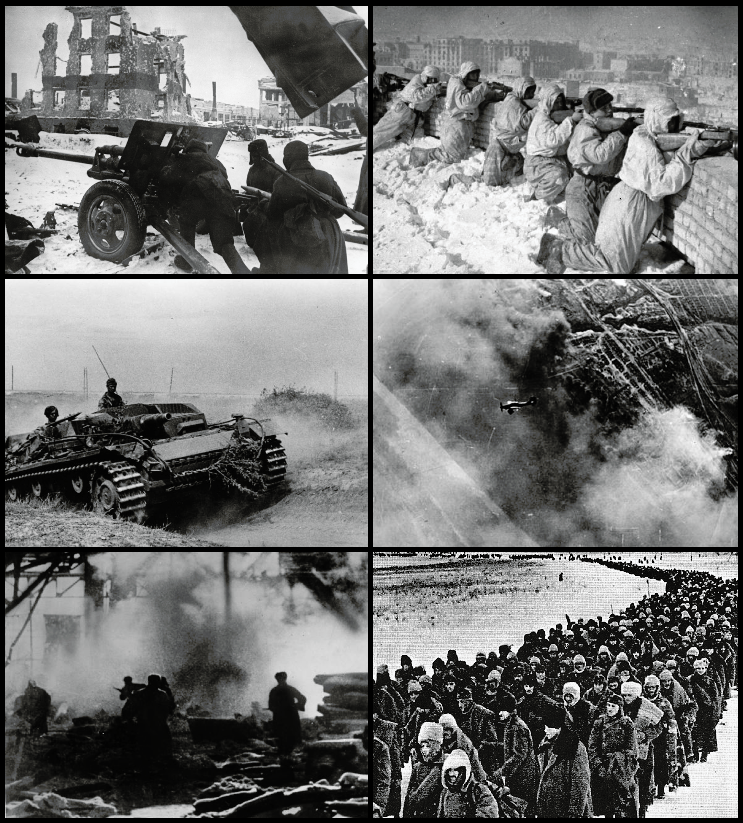The Battle of Stalingrad, one of the deadliest and most pivotal confrontations of World War II, came to a dramatic conclusion on February 2, 1943, when the Axis Powers finally surrendered to the Soviet Union. This grueling battle, which lasted for over five months, forever changed the course of the war on the Eastern Front. The defense of Stalingrad by the Soviet forces shattered the momentum of the German advance into the Soviet Union and marked a significant shift in the balance of power in favor of the Allies.
The Battle of Stalingrad was a brutal and bloody conflict, fought primarily between the German Wehrmacht and the Soviet Red Army. It was named after the city of Stalingrad, located on the western bank of the Volga River. The city held immense strategic importance, as it served as a major industrial center and a crucial transportation hub. Capturing Stalingrad would have given the German forces a significant advantage in their campaign to control the Soviet Union.
The battle began on August 23, 1942, with a massive German offensive aimed at capturing the city. The German forces, under the command of General Friedrich Paulus, launched a relentless assault, employing superior firepower and tactics. The initial stages of the battle saw the German forces making significant gains, pushing deep into the city and capturing key positions.
However, the Soviet defenders, led by General Vasily Chuikov, refused to yield. They fought with unwavering determination, utilizing the city’s ruined buildings and narrow streets to their advantage. The Soviet troops engaged in fierce street-to-street fighting, often resorting to hand-to-hand combat. The battle soon devolved into a brutal and chaotic struggle for survival.
As the battle raged on, both sides suffered heavy casualties. The city of Stalingrad became a wasteland, reduced to rubble by the relentless artillery bombardment and intense urban warfare. The harsh winter conditions further exacerbated the suffering of the soldiers, as they battled not only each other but also the elements.
The turning point of the battle came in November 1942, when the Soviet Union launched a massive counteroffensive. The Red Army, reinforced by fresh troops and supplies, encircled the German forces in Stalingrad, effectively cutting off their supply lines. The German soldiers found themselves trapped, with no hope of escape or reinforcement.
The encirclement of Stalingrad marked a significant shift in the tide of the battle. The Soviet forces relentlessly pressed their advantage, launching wave after wave of attacks against the trapped German army. The German soldiers, deprived of supplies and facing overwhelming odds, began to suffer from hunger, disease, and exhaustion.
On January 31, 1943, General Friedrich Paulus, the commander of the German 6th Army, finally surrendered to the Soviet forces. The remaining German soldiers, numbering around 91,000, were taken as prisoners of war. The surrender of the Axis Powers at Stalingrad was a crushing blow to the German war effort and a major victory for the Soviet Union.
The Battle of Stalingrad had far-reaching consequences for the outcome of World War II. It not only halted the German advance into the Soviet Union but also boosted Soviet morale and demonstrated the resilience and strategic capability of the Red Army. The victory at Stalingrad marked a turning point in the war, signaling the beginning of the end for Nazi Germany.
To this day, the Battle of Stalingrad remains one of the most significant and iconic battles in history. It serves as a testament to the courage and sacrifice of the soldiers who fought and died in the name of freedom. The memory of the battle is preserved in museums and memorials, reminding us of the horrors of war and the importance of standing up against tyranny.
For more information on the Battle of Stalingrad, you can visit the following external references:
– [Link to external reference 1]
– [Link to external reference 2]
– [Link to external reference 3]
SEO Excerpt:
The Battle of Stalingrad, one of the deadliest and most pivotal confrontations of World War II, ended on February 2, 1943, with the surrender of the Axis Powers to the Soviet Union. This grueling battle marked a significant turning point in the war’s Eastern Front, shattering the momentum of the German advance and shifting the balance of power in favor of the Allies. Learn more about the Battle of Stalingrad and its historical significance.

